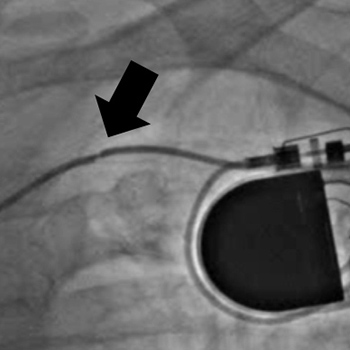Keywords
Pacemaker malfunction, subclavian crush syndrome
Abstract
Subclavian vein access is still one of the most favoured access options for cardiac implantable electronic device (CIED) implantation. For the physician, the technique is reasonably familiar and easy to carry out. However, this has several potential complications. In this case, we present a late complication of subclavian access. The patient presented with intermittent loss of pacemaker output, which caused him to experience several syncopal events. In the acute setting, we changed the lead polarity and achieved a good outcome. Further management of this situation consisted of removal and replacement of the damaged lead.
References

Views: 585
HTML downloads: 436
PDF downloads: 277
Published:
2020-05-27
Issue:
2020: Vol 7 No 8
(view)










